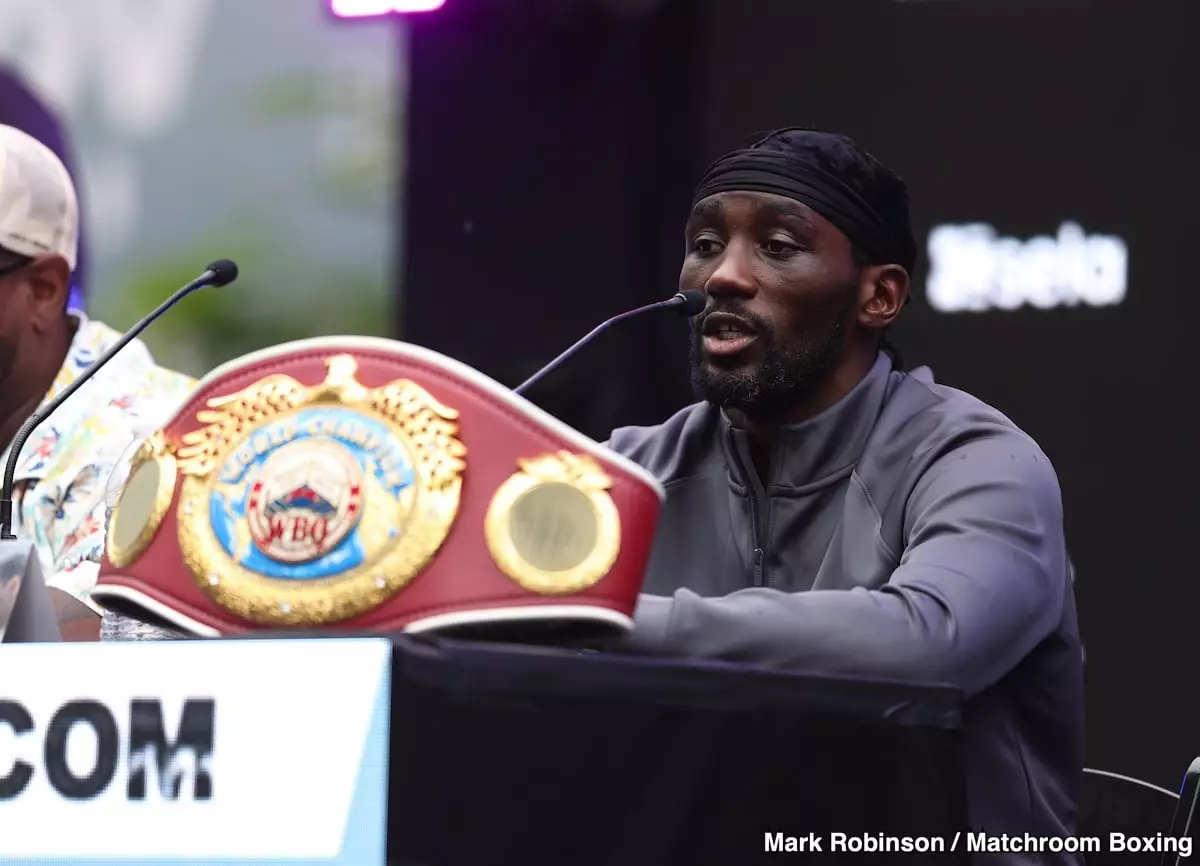The world of boxing, much like any other competitive sport, is replete with controversies and rivalries that not only fuel viewership but also shape careers. A recent exchange between Terence Crawford and Canelo Alvarez has stirred significant discussion among boxing enthusiasts. This debate centers around the legitimacy of Crawford’s impressive undefeated record. Alvarez publicly asserted that Crawford has only “beat one good fighter,” referring to Errol Spence. This claim has been met with backlash from Crawford, who insists that he has consistently demonstrated that he can make competent opponents appear insignificant. This incident highlights more than just personal animosity; it raises questions about the caliber of competition and the role of promotional practices in shaping a boxer’s legacy.
Crawford’s Undefeated Record: A Closer Look
Crawford boasts an impressive professional record of 41 wins, 31 of which were knockouts, but the nature of these victories is under scrutiny. A critical examination of Crawford’s opponents reveals a concerning trend: apart from Errol Spence, his list of challengers is not filled with names that resonate with serious boxing fans. Many of those on his resume are not considered elite fighters. Critics argue that a fighter’s true skillset can only be evaluated when facing formidable competitors, and there lies a significant gap in Crawford’s history when it comes to such opponents.
One cannot overlook that boxing today is influenced heavily by promotional strategies that often prioritize financial viability over competitive integrity. This trend has made it increasingly common for boxers to engage primarily with B-level fighters, strategically avoiding high-risk encounters that may tarnish their immaculate records. As such, while Crawford has had success, one must ponder whether his legacy is truly reflective of his skills or merely a product of strategic matchmaking.
Canelo Alvarez’s remarks resonate with certain truths that cannot be ignored. By claiming that Crawford has only faced one significant opponent, Alvarez underscores a vital criterion in boxing: quality over quantity. For a champion, it is the strength of opponents that usually enhances their legacy. While Crawford’s technical prowess in the ring is widely acknowledged, questions concerning his competitive choices are increasingly surfacing. Canelo’s stance is not merely a personal attack but a candid observation that sheds light on the broader narrative of boxing where reputations can sometimes overshadow reality.
Crawford responded to Alvarez’s criticisms by emphasizing that he has found joy in making others look inept in the ring. Such a statement, however, could appear defensive rather than assertive, raising doubts about his willingness to prove his worth against elite competition. Instead of merely dismissing Alvarez’s comments, it would serve Crawford better to engage with the notion of legacy-building through decisive victories over recognized opponents.
For Crawford to truly cement his legacy and quell critiques from peers such as Alvarez, a shift in approach is necessary. Moving up in weight class to challenge the likes of Canelo or competing against the rising stars in the junior middleweight division could open doors to meaningful bouts that define a champion’s worth. It is imperative that top-tier fighters do not shy away from competition simply because they are protective of their records. Engaging with formidable fighters broadens a boxer’s portfolio and adds layers to their narrative, making them more relatable and respected by fans and analysts alike.
Crawford has the talent and determination to achieve even greater heights, but opting for strategic matchups that do not challenge him enough stands to potentially diminish his legacy. As the landscape of boxing evolves and new formidable opponents develop, the need for experiencing competitive challenges becomes increasingly apparent.
The back-and-forth exchanges between Terence Crawford and Canelo Alvarez serve as a microcosm of the challenges faced by modern boxers striving for greatness. While Crawford enjoys an undefeated record, internal evaluations of competition quality echo loudly in decisions about legacy. To etch his name among the greats, Crawford must confront the very criticisms aimed at him and actively pursue the high-stakes bouts that will define his career—not just for himself, but for the legacy of boxing, which thrives on genuine contest and challenge. In doing so, he can turn skepticism into admiration and elevate his standing in a sport that passionately seeks authenticity and merit.


Leave a Reply